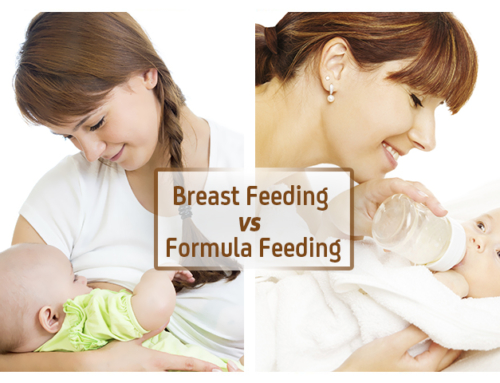
An article released in the journal Pediatrics recently (November 2020) examines the question of whether breastfeeding protects against hospitalizations and symptoms of illness at home in the first three years of life (Christensen et al., 2020). Brief summary: They found that longer duration of any breastfeeding reduced the incidence ratio of hospitalization in the first year and this was reduced even further with longer duration of exclusive breastfeeding. They did not find, however, any improvements from 12 to 36 months in symptoms of infection.
In our culture, chances are this is the kind of finding that will lead to doctors, other health professionals, parents, and more to use against any kind of longer-term breastfeeding support or encouragement. Why bother if there are no health benefits?
Not only does this ignore a vital fact that was highlighted in a wonderful review of the state of breastfeeding and human milk research and the needs going forward for this – namely that health benefits are hardly the only reason women choose to breastfeed at all or for a specified duration. Ignoring this ignores women and their voices and needs around the support of breastfeeding. But that’s a topic for that paper and another day.
No, the point here is to discuss something that is not unique to breastfeeding research, but certainly plays a large role in the findings and the interpretation of findings that needs to be acknowledged: how cultural bias actually helps dictate these scientific results.
We all like to think about science as being above culture. When people throw numbers out, they are “facts”. And they are, but only within a certain context and thus their applicability may not be all that. It’s like looking at a puzzle through the wrong end of a telescope – you’re going to get pieces of it that look like they go together, but we’re missing the whole picture. If we don’t step back and realize this, we may fail to ever get to the whole picture. Dr. Helen Ball of Durham University spoke about this statistical knowledge and the link to cultural knowledge with respect to sleep in a recent public lecture and Q&A session (link in references section) that I would urge you to check out. The struggle is that our scientific – or statistical – knowledge is limited by the culture we are in.
In the case of breastfeeding, our cultural biases mean that we examine these larger questions in cohorts of women who are only breastfeeding in certain ways and for certain durations of time. Some of the limitations can include:
- Using expressed milk in a bottle versus at the breast (which has been identified as resulting in different effects for some health outcomes)
- Duration of any breastfeeding
- Duration of exclusive breastfeeding
- Amount of nighttime feeding
- Socio-economic status
- And more..
In the case of this newer research suggesting that breastfeeding had no impact on infection rates or symptoms post 1 year, the cohort was a group of over 800 Dutch women who breastfed at least some of the time (even if it was very short). The average duration of breastfeeding was 7.6 months and of exclusive breastfeeding was 2.1 months. Without any other information, we can already see how some of this may impact the actual results and dictate the scientific knowledge we have without putting any caveats in about how the culture surrounding this may affect the findings.
For example:
- Dutch society as a whole is of a higher SES and this means lower incidences of infections and disease. Breastfeeding may therefore be far more important in cultures where there is more exposure to such diseases.
- The duration of any breastfeeding and exclusive breastfeeding was still quite low relative to the WHO’s recommendation that breastfeeding occur exclusively for 6 months and then continued for the first 2 years of life and then beyond as desired by the dyad. There is (finally) evidence building that examines this idea of dose-dependency with breastfeeding (something early research really failed at) and all of it seems to suggest that the more of it there is – both duration and exclusivity – the stronger the link to overall health.
- Many Dutch families do not bedshare which means there may be even more limited nighttime breastfeeding which is a regular source of milk intake for many babies. In one cross-cultural analysis, only 17% of Dutch mothers were bedsharing and even in this study, breastfeeding was a determinant of of bedsharing, so the loss of that can be linked to lower breastfeeding (though which comes first is up for debate or if there’s a confounding variable at play).
Thus the statistical or scientific knowledge we have here is really just a small piece of the puzzle. It is looking at a very narrow group of women and children and the effects of their cultural breastfeeding practices on this particular health outcome.
I have to be clear: This is not inherently a bad thing! Research always looks at small pieces of the puzzle and we require tons of different studies and collaborations to better reach our understanding of the whole. The problem is if those who are disseminating this information fail to be aware of the cultural limitations and treat the statistical data as being ecologically valid across different groups with different experiences. This becomes even more important when we look at the types of advocacy and support that is offered. If those in charge of making public health decisions (and funding that goes with it) don’t believe there is a health benefit to breastfeeding beyond one year because of findings like these, we will fail so many more mothers and babies through the lack of support they need.
Remember: we cannot disentangle culture from research, but we can make sure we acknowledge it and look to find other studies that examine these issues from a different cultural lens.
Relevant References
Azad, M. B., Nickel, N. C., Bode, L., Brockway, M., Brown, A., Chambers, C., … & Patel, A. L. (2020). Breastfeeding and the origins of health: Interdisciplinary perspectives and priorities. Maternal & child nutrition, e13109.
Ball, H. (2020). What is normal infant sleep: the view from Anthropology. Lecture given online November 11, 2020 via YouTube. Link for lecture: https://youtu.be/g5fOogsUpIk; link for Q&A: https://youtu.be/80ERaRad0EU.
Christensen, N., Bruun, S., Søndergaard, J., Christesen, H. T., Fisker, N., Zachariassen, G., … & Husby, S. (2020). Breastfeeding and infections in early childhood: a cohort study. Pediatrics, 146(5).
Klopp, A., Vehling, L., Becker, A. B., Subbarao, P., Mandhane, P. J., Turvey, S. E., … & Hayglass, K. (2017). Modes of infant feeding and the risk of childhood asthma: a prospective birth cohort study. The Journal of pediatrics, 190, 192-199.
Li, R., Dee, D., Li, C. M., Hoffman, H. J., & Grummer-Strawn, L. M. (2014). Breastfeeding and risk of infections at 6 years. Pediatrics, 134(Supplement 1), S13-S20.
Luijk, M. P., Mileva-Seitz, V. R., Jansen, P. W., van IJzendoorn, M. H., Jaddoe, V. W., Raat, H., … & Tiemeier, H. (2013). Ethnic differences in prevalence and determinants of mother–child bed-sharing in early childhood. Sleep medicine, 14(11), 1092-1099.
Moshammer, H., & Hutter, H. P. (2019). Breast-feeding protects children from adverse effects of environmental tobacco smoke. International journal of environmental research and public health, 16(3), 304.
Sherwood, W. B., Bion, V., Lockett, G. A., Ziyab, A. H., Soto-Ramírez, N., Mukherjee, N., … & Karmaus, W. (2019). Duration of breastfeeding is associated with leptin (LEP) DNA methylation profiles and BMI in 10-year-old children. Clinical epigenetics, 11(1), 128.






Leave A Comment